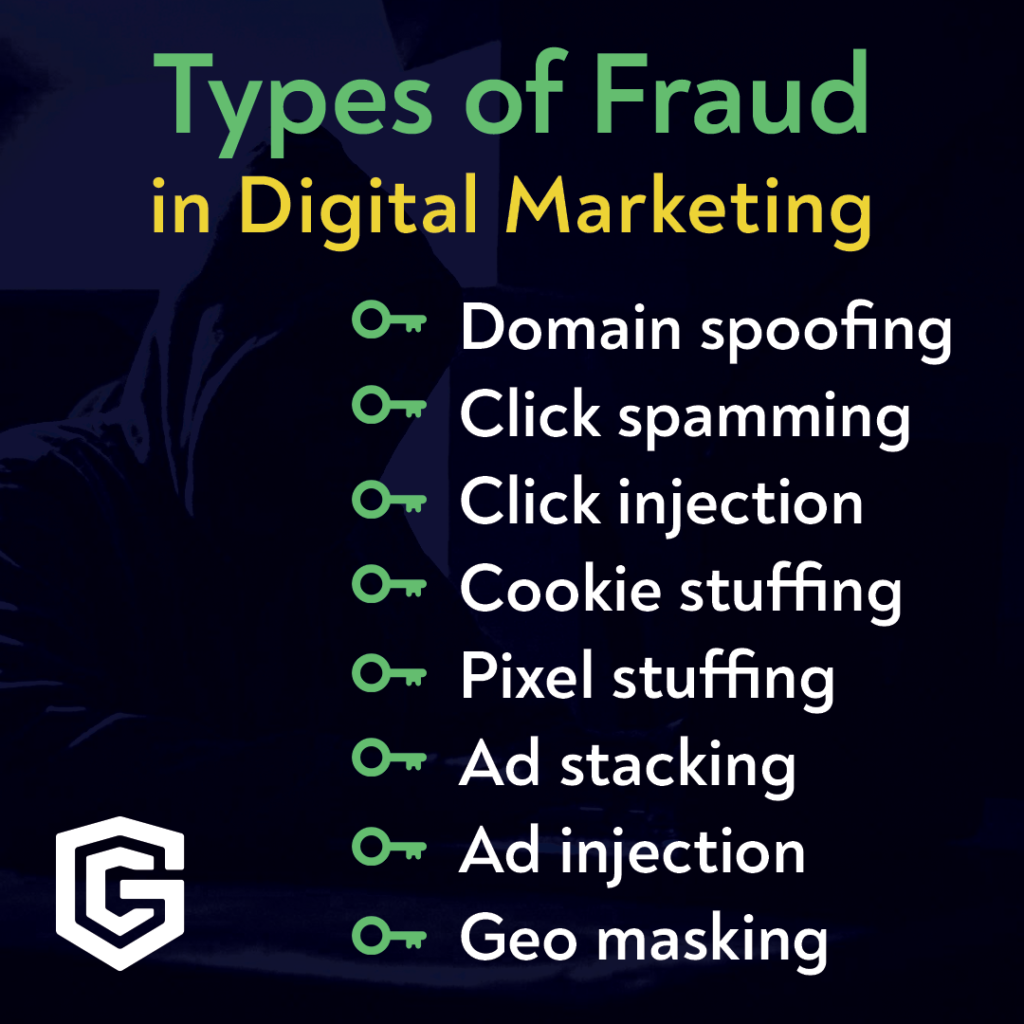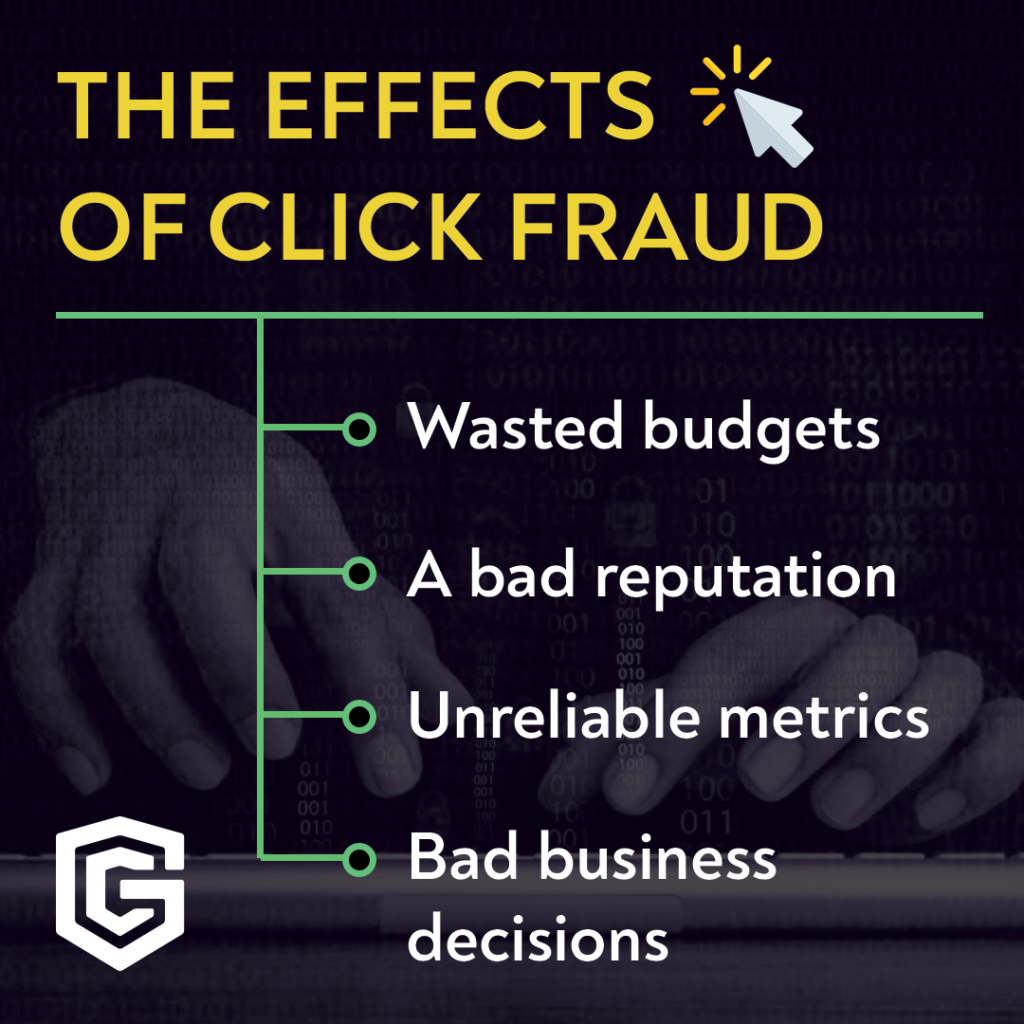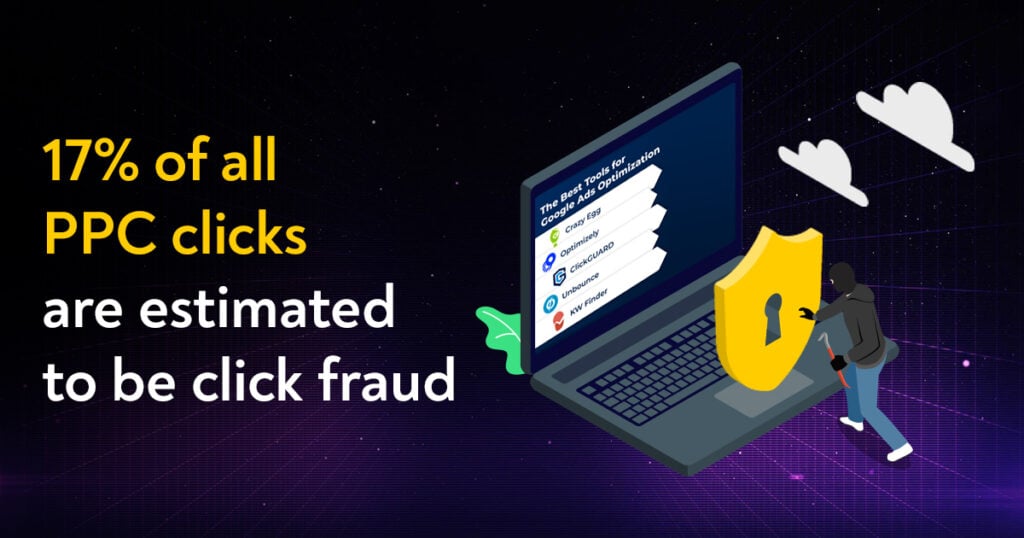In the world of online marketing, success is often measured in clicks and conversions. However, what if these metrics were artificially inflated by fraudsters looking to exploit the system? With the widespread adoption of digital advertising, there has also been a surge in fraudulent activities that many of us may not be aware of. This rise of fraudulent traffic is a significant concern for businesses: advertisers often end up paying for fake clicks or impressions that do not result in any genuine engagement or conversions. So, how prevalent is this issue exactly? And why should advertisers be concerned?
The dark side of digital advertising is certainly real. Fortunately, however, there are measures to safeguard our campaigns from marketing fraud. Here is what you should know about fraud in digital marketing as it exists today and about what you can do to protect your advertising efforts.
What is Fraud in Digital Marketing?
Digital marketing fraud uses fake traffic and engagement to hijack advertising clicks for the financial benefit of cybercriminals. Fraud in digital marketing involves spammers using automated click bots to create fraudulent traffic or engagement on ads.
Advertisers create Pay-Per-Click (PPC) campaigns assuming that their ads are viewed by real people that fit their target demographic. Unfortunately, they are sometimes wrong. According to our research, 42% of all online traffic today is driven by bots.
While some of these bots are good bots, like Google’s crawlers, a vast majority of them are bad. Bad bots are designed to pose as real human traffic – but with the ultimate purpose of helping spammers or fraudsters drain advertisers’ campaign budgets.

The Prevalence of Fraud in Digital Marketing
The worldwide digital ad market is huge. According to a recent Statista report, Google’s revenue from Google Ads was a tremendous $224.47 billion in 2022 – we expect to see this number to keep growing. But as more companies are investing in digital advertising, more cybercriminals are also trying to take advantage.
Here are some more worrying statistics about fraud in digital marketing:
- The global cost of ad fraud is expected to continue to grow exponentially to 100 billion US dollars by 2023. (Statista)
- 14% of all PPC clicks are estimated to be click fraud and one out of every three dollars spent by advertisers is wasted due to ad fraud. (ClickGUARD)
- The global fraud detection and prevention market is expected to reach $92.3 billion by 2027. (Vynz Research)
- 56% of impressions served (or ads shown) across Google’s display advertising platforms aren’t viewable for the users. (Google)

8 Types of Fraud in Digital Marketing
Cybersecurity and digital fraud are never easy to identify and stop. To complicate things even more, fraud in digital marketing comes in different shapes and sizes. And it’s getting more complex every day.
There are a few features that help differentiate between different kinds of fraud. Namely there are eight common types of fraud in digital marketing:
Domain Spoofing
Domain spoofing is a type of digital ad fraud that involves disguising one website as a different, more valuable one. Through domain spoofing, cybercriminals trick advertisers into paying more for advertising space. As the website is seen as valuable, advertising costs are set higher.
Traffic from the spoofed domain may not match the kind of traffic that the website should be getting. This is one way to identify domain spoofing. Another sign could be that the publisher is not selling ad space in Real-Time Bidding (RTB) auctions. Any other kind of inconsistent information, like the site using a different email domain, can be a sign of domain spoofing.
Click Spamming
Click spamming is a kind of mobile ad fraud that happens through mobile apps or mobile web pages. Usually, the unsuspecting user will download a mobile app that is infected with a piece of bad code or malware. This code will make the app click ads in the background, while the app is in use. Often the user doesn’t even get to see the ads that are being clicked.
For the user, it is very difficult to identify such a fraudulent app. However, click spamming can often lead to a high amount of clicks in a low amount of time. These clicks most likely will not convert. This can be a sign that a certain mobile website or app is actually click spamming.
Click Injection
Similar to click spamming, this ad fraud involves cybercriminals putting malware on user devices. However, click injection is somewhat more sophisticated. Instead of just automatically and continuously clicking on ads, they generate clicks just before the installation is finished and this attributes the installation to the fraudster.
The infected apps then generate clicks on ads, such as Facebook ads, banner ads, or Google Ads. As in the case of click spam, this method inflates the spending on those ads so that the cybercriminals get paid for ad clicks – rather than the real ad network.
Ad Injection
Ad injection and click injection are similar fraudulent techniques used by cybercriminals to generate illegitimate revenue. However, while click injection involves falsely attributing credit for clicks to a malicious actor, ad injection entails the unauthorized insertion of ads in places where they do not belong. This practice is typically executed through browser extensions, plugins, and malware, and the ads may appear illicitly or replace other legitimate advertisements.
When users unwittingly click on one of these injected ads, the fraudster receives credit for the click, even though they do not own the website where the ad is placed.
Cookie Stuffing
Cookie stuffing is an Android-specific form of mobile ad fraud in which multiple affiliate tracking cookies are placed on a website visitor’s browser simultaneously. This is often seen in affiliate marketing programs, which use cookies to track the referral source of website traffic. If the visitor goes to a website within an affiliate program, the cybercriminals’ cookies may be falsely credited for the referral, leading to undeserved rewards from the affiliate marketing program.
Pixel Stuffing
In this case of digital ad fraud, fraudsters create a small advertising display that a user never actually gets to see. This is usually a 1×1-pixel area. Using this method, a single web page can display hundreds of invisible ads.
This kind of digital marketing fraud is meant to take advantage of marketing campaigns that target a high number of impressions. Since the advertiser pays for impressions, the fraudster can receive credit for dozens or even hundreds of display ads at once.
Of course, pixel stuffing does not produce any other kind of results. Clicks and conversions will never happen since the users don’t get to actually see the ads.
Ad Stacking
Ad stacking is rather similar to pixel stuffing. The difference is that this fraud method doesn’t use pixels, but real ads. The ads aren’t invisible, but they are stacked one on top of the other in the web browser. The user only sees one of the ads, but the fraudsters can claim credit for all the stacked ads.
The goal of ad stacking is to display more ads to visitors at the same time. This then artificially grows the number of impressions. This of course works in the case of display ads.
Geo Masking
Another fraud in digital marketing is geo masking. This happens when a fraudster hides the location of the leads they generate. It essentially involves spoofing the IP addresses of the leads they create to make them look more valuable.
This type of ad fraud is aimed at advertising campaigns that target different or have different budgets for different locations. The cybercriminals will spoof the IP addresses so that they increase their earnings.
Can Digital Marketing Fraud be Stopped?
Fraud in digital marketing can have a series of negative effects on advertising campaigns and businesses in general. These effects include:
- Wasted budgets on fake traffic, clicks, or leads.
- A bad reputation: if the ads appear on irrelevant or spammy websites.
- Bad metrics: when fake traffic and engagement are registered as legitimate.
- Bad business decisions: if the advertiser uses the spoiled metrics, this can affect all marketing decisions and their business in general.
While it is difficult to completely stop fraud in digital marketing, efforts are being made. Advertising networks try to detect fraud and eliminate bad platforms. However, these efforts remain very limited.
Now more than ever, marketers and business owners must acknowledge that fraud in digital marketing is a growing problem. They also need to be aware of the solutions that can effectively address this problem.
ClickGUARD offers a comprehensive solution to marketing fraud that every marketer should consider adding to their arsenal. Our latest version has fully automated protection features and a user-friendly interface, which means it can help businesses of all sizes optimize their campaigns’ performance and maximize their return on their advertising investments.
With its firewall-like functionality, ClickGUARD protects ads from fraudulent clicks and wasteful traffic by analyzing and assessing each click based on IP address, location, device, and more. This protects your Google Ads campaign from unwanted clicks, optimizing it for your real audience. Additionally, ClickGUARD provides custom reports that offer detailed and accurate updates on ad clicks, enabling advertisers to assess specific issues related to their campaign.
Fraud in digital marketing is a real problem. And it’s here to stay. Even though companies are aware of the dangers of digital fraud, it is very difficult to completely stop it; cybercriminals are very adaptable and ingenious. But by using a leading solution that actively screens out fraudulent traffic and determines whether a real person or bot has clicked on their ads, advertisers do not have to fear the Dark Side of Digital Advertising. Instead, they can rest assured they are receiving genuine clicks – ones that will bring them real business.
FAQ
What is digital marketing fraud?
Digital marketing fraud involves the use of fake traffic and engagement to hijack advertising traffic for the financial benefit of cybercriminals. It involves spammers using malware or bad code to create fraudulent traffic or engagement on ads.
How common is fraud in digital marketing?
It is estimated that as much as 42% of all online traffic today is driven by bots. While some of these bots are harmless web crawlers, most of them are bad. 14% of all PPC clicks are estimated to be click fraud. Additionally, nearly 56% of impressions served (or ads shown) across Google’s display advertising platforms are never seen by humans.
What are the estimated costs of ad fraud?
The global cost of ad fraud is expected to continue to grow exponentially to 100 billion US dollars by 2023 (Statista). One out of every three dollars spent by advertisers is wasted due to ad fraud.
What are the different types of fraud in digital marketing?
The eight common types of fraud in digital marketing are: domain spoofing, click spamming, click injection, cookie stuffing, pixel stuffing, ad stacking, impression fraud, and affiliate fraud.
What is the best way to identify click fraud?
Click fraud isn’t always easy to identify, but any unusual activity on your ads may be a sign of fraudulent activity. You should look for unusual patterns and results that don’t match your experience and expectations – this guide might help. The six signs you should look out for may include:
A sudden surge in clicks
Unusual peaks in impressions
Low conversion rates
Very high Click-Through-Rate (CTR)
A low number of page views
High bounce rates
What is the best way to prevent marketing fraud?
ClickGUARD is the leading Google Ads click fraud protection and prevention software. It essentially works like a firewall, building a shield around your ads that can both detect and prevent illegitimate clicks or wasteful traffic. And to address the incessant flow of fraudulent non-human activity, the latest version is fully automated. It is also more robust and easier to use, allowing businesses of any size or any PPC marketer to use this powerful tool to their advantage.



